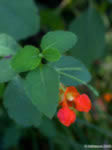Herb Standardization- Is is Better?
Steven Dentali, Ph.D., Dentali Associates
Natural Products Consulting Services
mailto:dentali@aracnet.com
As A. Bonati, of Indena (a major supplier of standardized extracts) explained in his 1991 Journal of Ethnopharmacology article (32:195-197), standardization "does not end with the identification and assay of an active principle or marker. Standardization signifies the body of information and controls that are necessary to guarantee constancy of composition - hence the standardized quality of a phytopharmaceutical drug."
To appreciate the situation it should be recognized that botanical preparations must be of consistent quality in order to carry out reliable clinical trials. This is the overriding reason for the appearance of
"standardized" botanical materials.
In some cases this consistency is achieved through the semi purification of crude material.
(Semi purified clinically proven materials should not be assumed to necessarily be "better" preparations than the crude drug unless one or two situations exist: 1) toxic materials are present which have to be
removed or 2) the botanical is too dilute do deliver medicinal action in the crude form.)
(In fact, if neither of the above two conditions are present then, unless proven otherwise, and assuming that a minimum acceptable quality is present, semi purification must be assumed to degrade the medicinal action of the plant. Of course other economic and practical matters come into play, such as storage conditions, shelflife, etc.)
Many crude preparations carry standards that state a minimum concentration of some, hopefully relevant, compound. This can be part of a reasonable approach to establishing product quality as long as such identification also includes several groups of substances. Although this may be done by some manufacturers it is seldom understood or reviewed by distributors and other producers.
The assumption, at least in the US, is that "standardization" is always scientific and guarantees an effective product. We have to only look as far as standardized feverfew extracts to see that this is not the case.
(Feverfew leaf was shown to be effective in clinical trail. An standardized extract of feverfew leaf failed in a subsequent clinical trial.)
We may recall that medicinal herb use existed before science. Science must be thoughtfully applied if it is to help guarantee consistent, effective medicinal preparations. The activity of a clinically proven extract cannot be assigned, with certainty, to the bioactive materials it contains unless clinical trials are also conducted on the purified compounds.
A little more thought shows that the situation quickly becomes quite complex if we wish to scientifically prove the activity of a crude extract and scientifically assign this activity to a portion of the (incompletely
defined) mixture.
Of course there are numerous examples where establishing a minimum percentage of a particular compound or compounds makes perfect sense. We should not however, let this lull us into thinking that the standard is more important than what is being standardized.
--
Steven Dentali, Ph.D., Dentali Associates
Natural Products Consulting Services
mailto:dentali@aracnet.com
Library





